Discover things to do in Lisbon in November. Find out if a November trip to Lisbon is worth doing. Enjoy the best of Lisbon during the offseason.
Are you thinking about visiting Lisbon in November? We recently moved from Dublin to Lisbon and have been taking time to really get to know our adopted city.
Let's explore a variety of fun things to see, do, and eat in Lisbon to help you make the most of a trip on the cusp between Autumn and winter.
What's the Weather Like in Lisbon in November
Let's start with a very important question: what is the weather like in Lisbon in November? Lisbon temperatures start to cool off a bit in November and you could be in for some rain. You can expect average temperatures ranging from a high of 18 °C (about 65 °F) to a low of 12 °C (about 54 °F).
Make sure to pack layers so that you'll be comfortable whether it's warm and sunny or cool and rainy. Bring a rain jacket and umbrella just in case. Lisbon can be quite humid which makes the temperature feel chillier than it might in other places especially early in the morning and after the sun goes down.
Things to do in Lisbon in November at a Glance
Now let's take a look at things to do, see and eat in Lisbon in November at a glance. Each heading is clickable and will take you directly to the item of interest.
Table of Contents
Booking.com
Table of Contents
- National Tile Museum
- Web Summit
- Walk from Carcavelos Beach to Santo Amaro
- Catch the Sunset at Cais Sodre
- Fabrica Coffee and Ascensor de Lavra to Jardim do Torel
- Principe Real Saturday Farmers Market
- Auto do Longo and a Snack in the Park
- Lisbon Botanical Garden
- Lunch at Pão de Canela
- Cemitério dos Prazeres
- Arco do Cego and Culturegest Exhibits
- Penha da Franca Miradouro
- Quiosque Wine and More
- Belém Maritime Museum
Things to do in Lisbon in November in Detail
Let's explore cool things to do in Lisbon in November in more detail. I've actually done all of these things in the month of November, so they are tried and tested for this time of year.
1. National Tile Museum
One of the most charming things about Portuguese architecture are the colorful patterned tiles or azulejos. Head to the National Tile Museum (a true Lisbon hidden gem) to learn about the extensive history of Portuguese tiles. The museum is based in a 16th century convent which only adds to the atmosphere.
Have a bite to eat in the courtyard of the onsite cafe before exploring a wealth of tile-based works of art through the centuries. The best part of the National Tile Museum has to be the panoramic exhibit of Lisbon from before the 1755 earthquake done in blue and white tiles.
The National Tile Museum costs 5 EUR for an adult ticket at the time of writing. The museum is a bit off the beaten path so plot a course by bus to Igreja Madre Deus or take a Bolt or Uber.
2. Web Summit
It's impossible to talk about Lisbon in November without mentioning Web Summit. This massive conference focused on Tech entrepeneurs and the start-up ecosystem was founded in Dublin but outgrew Ireland and moved to Lisbon in 2016.
The conference takes place in the Altice Arena and Lisbon Exhibition & Congress Centre in Parque das Nações, an area along the Tejo River more commonly known as Expo.
70,000 techies descend on Lisbon in early November and essentially take over the city. If you work in Tech, it's worth visiting Lisbon for Web Summit to see the spectacle once. Conference tickets can be quite expensive, but there are deals to be had if you book early.
I was offered two Women in Tech tickets to Web Summit for less than 100 EUR total. I got to listen to some inspiring speakers ranging from the First Lady of Ukraine to the founder of Bolt to Noam Chomsky.
You'll find lots of talks at the intersection of Tech and other disciplines like healthcare, climate action, and more. Many of the speakers are working on cutting edge technology like Quantum Computing and solar cars!
I got to see a really cool robot as I was waiting in the queue to enter Web Summit. It almost looked like a guard dog and was following someone from Prosegur. The robot could walk in in many different directions and looked uncannily like an animal.
I found out later that apparently the robot guard dog responds well to petting. It's friendlier than it looks, I suppose!
You'll find a whole bunch of social events and meet-ups surrounding Web Summit which give you the excuse to explore different neighborhoods. One of the Night Summit events was held at Pavilhão Carlos Lopes, a mansion on the edge of Parque Eduardo VII.
The building was really fascinating on the inside. There were some Greek-inspired sculptures and cool blue azulejos on the walls.
The bands playing Night Summit were very 'on brand'. There were lots of laser lights and and music that sounded like you were in a video game.
It was a very immersive experience, almost like a preview of the metaverse which was a big topic at Web Summit.
Take the opportunity to walk along the Tagus River to decompress from a busy week of web summiting and watch the sun set.
Keep an eye out for an impressive trash sculpture created by Portuguese artist Bordalo II.
3. Walk from Carcavelos Beach to Santo Amaro
The great thing about Lisbon in November is that it's way less crowded with tourists and yet the weather can still be spectacular.
We took the opportunity of a sunny November Saturday to take the train from Cais Sodre to Carcavelos Beach (about 30 minutes). A beach day in November would have been unthinkable in Ireland.
Carcavelos Beach is an ideal spot for a relaxing lunch with views of the sea. Walk from Carcavelos Beach past Forte de São Julião da Barra and on to Oeiras Marina; a great spot for a gelato and some birdwatching.
Walk as far as Santo Amaro Fort to enjoy lovely views along the Tagus River and then head inland to Santo Amaro train station for the return journey to Lisbon.
4. Catch the Sunset at Cais Sodre
Walk out of the train station and across the street toward the Tagus River to get stunning views over the 25th of April Bridge and Cristo Rei (the big Jesus status across the river in Setúbal). The combination of tourist attractions and the cranes from the port make this a lovely spot to watch the sunset and it's aftermath.
5. Fabrica Coffee and Ascensor de Lavra to Jardim do Torel
Go for a morning coffee walk and ride on a historic ascensor when you visit Lisbon in November. Fabrica Coffee Roasters is one of my favorite Lisbon coffee shops. There are a few different locations, but for this walk, head to the outlet not far from Restauradores Metro Station.
We indulged in an Ethiopian batch brew for 2.80 EUR plus a chocolate cookie that was served warm and had a carmelized crust which was super-good. The seating area has tons of character and eclectic furniture.
Ascensor de Lavra is located just down the block from Fabrica Coffee Roasters. Lisbon's trams and ascensors are typically more expensive on a per-ride basis than the Lisbon Metro and buses, but the trams are included in the monthly pass that you can load onto your Navegante Card.
We had nothing to lose since we had a monthly transit ticket for November, so we hopped on to see where the ascensor would take us.
We learned that Ascensor de Lavra opened to the public in the Spring of 1884. The ascensor was classified as a national monument in 2002.
We were delighted to find Jardim do Torel when we disembarked from the funicular. The park features an Egyptian maiden in the center with all sorts of ghoulish heads around it.
Jardim do Torel is incredibly peaceful especially if you visit on a morning in November. The park features a spectacular miradouro. From here you can actually see one of our favorite miradouros in Principe Real: Miradouro de São Pedro de Alcântara.
Drink in the views of Principe Real, Rato, and the Amoereiras Mall. The morning light in Jardim do Torel in November is really, really nice; great for photography.
Climb down the stairs at the viewpoint and descend to a beautiful fountain. There is a large mansion overlooking this section of the park. It turns out this is actually a palace and is now the Galician Cultural Center of Lisbon.
Keep walking downhill through the park until you emerge onto the street. Keep going downhill until you arrive back at the Avenida station of the Lisbon Metro to conclude this morning outing in November.
6. Principe Real Saturday Farmers Market
Principe Real is a great place to spend a sunny Saturday in November. Start by checking out the weekly farmers' market. In addition to fruits, vegetables and all sort of food items, you'll find an area featuring an array of local arts and crafts. This is a great spot to buy some local gifts and get a head start on your Christmas shopping (Christmas in Lisbon is a particularly festive time of year to visit).
7. Auto do Longo and a Snack in the Park
After checking out the Principe Real Farmers' Market, we went to Auto do Longo, which was listed on Google Maps as a photo spot so we decided it was worth checking out.
We discovered some lovely street art and a beautiful door surrounded by pink flowers. Auto do Longo is a lovely little detour if you find yourself in the neighborhood. We set our course back towards the park in Principe Real and made a pitshop at Empanadas do Maxi along the way.
Empanadas do Maxi is a little hole in the wall place that serves lovely Argentinian empanadas. The empanadas are rather expensive at 3 EUR each for a small treat, but worth the splurge once in a while.
We even bought one filled with humita, our favorite from our trip to Buenos Aires years ago. Other flavors included spicy meat and ham with three cheeses.
We even indulged in an alfajor that would have made my top-rated list of Argentinian alfajores. It was filled with copious dulche de leche in the middle and was sandwiched by two very soft, almost shortbread-style biscuits. The biscuits were especially good: so soft and moist.
Eat your Argentinian treats in nearby Jardim do Príncipe Real.
8. Lisbon Botanical Garden
The Lisbon Botanical Garden (Jardim Botânico de Lisboa) is another great place to visit on a sunny day in November when it's not too hot. You can explore the upper gardens for free. It cost 5 EUR at the time of writing to visit the extensive arboretum clinging to the hill.
The free park of the Lisbon Botanical Garden features an old 19th century observatory housed in a pink building. You'll find lots of great photography opportunities here.
We were admiring the observatory when we turned around and were surprised to discover a bunch of bones from a Minke Whale that were being cleaned and bleached.
What was really surprising though was that we had the upper garden all to ourselves. You'll find little squares defined by hedges with different types of plants inside. The whole garden array featured a murky pond in the center. The whole upper garden was elegant but a little decrepit.
It turns out that the stagnant pond is filled with aquatic plants and loaded with tadpoles.
Scan your ticket and walk down an elegant flight of stairs covered in mosaic stones.
The arboretum at the Lisbon Botanical Garden is largely comprised of trees and bushes. The park was designed by Jules Daveau in 1876 and includes large trees from regions around the globe which contribute to a tropical and subtropical landscape. In 1892 Henry Cayeux introduced ornamental plants including tropical palms and figs.
The middle and lower ponds add atmosphere to the arboretum. We discovered a sensory garden in the Lisbon botanical garden with elements that will appeal to the different senses. For example, you can walk around barefoot on a walking path to feel different textures.
We spent about 30 minutes walking around the arboretum at the Lisbon Botanical Garden. Our impressions was that it's not worth 5 EUR per person to go on a regular basis, but Jardim Botânico de Lisboa is worth visiting at least once regardless.
9. Lunch at Pão de Canela
Walk downhill from Principe Real to Jardim Fialho de Almeida, a square surrounded by quaint cafes. Sit down to eat at Pão de Canela. It's very quiet and residential over here. We ordered some cheese, bread, and a glass of wine. We split an order of arroz negro no forno and a quinoa salad. Definitely save room for dessert.
We tried As farófias da Alice, a sobremesa made with sweet meringue over a bed of custard with cinnamon on top served in a giant cappuccino mug. It was not our original intention to order this dish, but the waiter talked us into it and we were so glad that he did.
10. Cemitério dos Prazeres
If you visit Lisbon in November, you benefit from less tourists which mean the trams are less crowded. Use the opportunity to take the 28E tram (one of my top picks for things to do in Lisbon in October) to the end of the line in Campo de Ourique. The terminus of the 28E is right in front of Cemitério dos Prazeres.
In the winter months, the cemetery is open to the public until 5 pm. We took the opportunity to stroll through row after row of architecturally ornate and slightly creepy tombs.
We were delighted to find some spectacular views over the 25th of April bridge and Christ the King statue across the Tagus River.
I can imagine that this would be a really nice spot to watch the sunset in december when the sun sets closer to the 5 o'clock cemetery closing time.
Cemitério dos Prazeres ranks up there with Cemitério do Alto de São João (a Lisbon hidden gem) in it's beauty.
11. Arco do Cego and Culturegest Exhibits
If the weather turns cold and rainy on your November visit to Lisbon, head to Culturegest near Campo Pequeno and Arco do Cego. Arco do Cego was originally built as social housing, but now it's just a gentrifying neighborhood full of colorful houses with pastel shades everywhere you turn.
Culturegest hosts various temporary exhibits. When we visited, there were two things on: an art exhibit of provocative works by Mattia Denisse and an exhibit of visionary architectural projects. We paid one euro for each exhibition.
The architecture exhibit was really what we'd come for. We got to see all sorts of visionary projects over the decades including man-made islands to solve problems related to climate change and in interesting exhibit on Auroraville, a planned community in India which had sort of a 1970s vision of the future vibe to it.
The Culturegest exhibits were a great value and definitely worth checking out.
12. Penha da Franca Miradouros
If you read Sidewalk Safari regularly, you can probably tell that I love combining coffee and views and Penha da Franca is full of stunning miradouros. Start out with a coffee at Malabarista. Take your specialty coffee to go and then get ready to climb.
Miradouro do Monte Agudo is part way up the hill and you get some nice views of the surrounding neighborhood and the 25th of April bridge and Christ the King statue.
If you are ambitious and keep walking uphill, you'll be rewarded with more amazing views at Miradouro da Penha de França. Here you'll find panoramic vistas across the city. You can see Vasco de Gama bridge and Lisbon's Expo neighborhood from here.
Heading to Penha da Franca in November is a perfect idea for a crisp sunny morning.
13. Quiosque Wine and More
In Lisbon in November, it's nice to go out in the late afternoon to a local park and hang out at a quiosque (kiosk). Quiosques are a staple of social life in Lisbon and you'll find them in nearly every patch of green space around town.
Grab a glass of wine and expect to pay about 3 EUR for a very generous pour. If wine isn't your thing, you can also try a local beer (order an imperial; a small glass) with an optional side of cheesecake.
Get some fresh air and enjoy the sunshine before winter settles over Lisbon.
In Lisbon in November, it's nice to go out in the late afternoon to a local park and hang out at a quiosque (kiosk). Quiosques are a staple of social life in Lisbon and you'll find them in nearly every patch of green space around town.
Grab a glass of wine and expect to pay about 3 EUR for a very generous pour. If wine isn't your thing, you can also try a local beer (order an imperial; a small glass) with an optional side of cheesecake.
Get some fresh air and enjoy the sunshine before winter settles over Lisbon.
14. Belém Maritime Museum
To finish off this list of things to do in Lisbon in November, let's deep dive on a fascinating place: the Lisbon Maritime Museum in Belém.
Belém is extremely popular with tourists, so it's best to visit during the off-season. November is the prefect time to visit the Maritime Museum in Belém. Pay 6.50 EUR for an adult ticket at the time of writing.
The entrance to the Maritime Museum is very impressive and features a giant statue of Henry the Navigator and a number of other early Portuguese explorers that were Henry's contemporaries.
These Portuguese explorers started out along the coast of Africa. Nuno Tristão reached Cape Branco. Pedro de Sintra reached present day Sierra Leone in 1460. Henry the Navigator himself lived from 1394 to 1460. He was the son of King João I and Philipa of Lancaster and was born in Porto.
Henry was credited with initiating and stimulating the magnificent enterprise of the discoveries.
Gil Eanes rounded Cape Bojador in 1434 opening a wave of Portuguese expansion along the west coast of Africa. Diogo Cão discovered the mouth of the River Zaire and rounded the cape which is today as Santa Maria. Cão explored far and wide. On one particularly impressive journey from 1485 - 1486 he surveyed the coast of Angola and reached as far as the coast of present day Namibia.
Diogo Gomes undertook several voyages along the African coast and discovered Cape Verde.
João Gonçalves Zarco and Tristão Vaz Teixeira discovered the islands of Porto Santo and Madeira in 1419 - 1420. Today, Madeira is one of our favorite places for a weekend break.
While the Portuguese explorers who came to the Americas were well-covered by the American school system when I was growing up, many of these names and sculptures were new to me.
The Maritime Museum in Belém features a giant colorful map on the wall showcasing Portuguese maritime discoveries of the 15th and 16th centuries. A number of exotic birds are featured prominently around South America on that map. Everything just has a little bit of a gold, gilded feel to it.
There's also a lovely stained glass family tree of Henry the Navigator.
I learned that Europe was constrained by the same geographical boundaries since the classical antiquity and the Mediterranean was the center of the known world. The Atlantic was looked upon as a dark and perilous sea which few dared to explore.
In the early 15th century Portugal looked seaward for opportunities to expand. New ships along with innovative astronomical navigation techniques helped overcome the many challenges presented by each new voyage. The oceans were explored, contacts were made and new trade routes were established with distant peoples.
Portuguese discoveries helped create a new concept of the world. You could argue that they were an important first step in globalization that has accelerated to the present day.
Did you know that by the time of his death in 1460, Infante Dom Henrique had been responsible for the exploration of a wide part of the African coast between Cape Bojador and Sierra Leone as well as for the discovery and recognition of the archipelagos of Madeira, the Azores, and Cape Verde.
The Atlantic was finally opened to maritime exploration. This museum is great for reinforcing information about the Age of Discovery that I learned in high school. For example, I forgot that Vasco de Gama left Portugal for India and established the first maritime connection with the Indian subcontinent.
I spotted a really cool statue of the Archangel Saint Raphael that actually went on the voyage with Vasco de Gama. The statue survived a shipwreck and went with them on his subsequent voyage.
You'll find so much history on display at the Maritime Museum including some really cool spice jars showing the means of transporting valuable spices like cinnamon, pepper, and star anise via Portuguese trade routes.
You'll also find interesting information on the Napoleonic Wars and how the Portuguese royal household was evacuated to Brazil in 1807 when Napoleonic troops invaded Portugal. The Portuguese navy played a key role in the transfer of the Portuguese royal family from Lisbon to Rio de Janeiro. This involved a convoy of 56 ships carrying over 15 thousand people.
Taking a tour through the Maritime Museum is a good way to see some of the architecture of Monastério de los Jeronimos without having to deal with the massive, massive crowds. The Maritime Museum is much less popular than some of the other nearby attractions in Belém. Peek out the open door into a large courtyard.
One of the coolest parts of the Maritime Museum is the Hall of Royal Barges. At first, it looked like there were just a couple of small rowboats outside between the two buildings comprising the museum.
Then we got a little closer and discovered: Wow! The exhibit features probably 15 or 20 very ornately decorated boats.
We were particularly impressed by the big barge, the Galeota Grand which was built in 1728 by order of King João V for his own use. The thing that makes this royal galleon most impressive beyond its fantastic, ornate decorations done in blue paint and carved wood was the fact that the boat needed to be rowed by 80 oarsmen plus one coxswain and one bowman.
The Hall of Royal Barges even features a couple of really cool seaplanes on display.
If you have time to do just one activity in Lisbon in November, I recommend spending a few hours at the Maritime Museum in Belém.
Map of Things to Do, See, and Eat in Lisbon in November
Click on the image of the map below to open up an interactive version in Google Maps to help you connect the dots and plan your own November itinerary in Lisbon.
Should You Visit Lisbon in November?
Is Lisbon worth visiting in November? Traveling to Lisbon in November is a good bet in my view. Prices are lower and there are less tourists around compared to the high season in the summer. You may be gambling a bit with the weather, but November in Lisbon isn't nearly as cold as December and January in general.
If you are planning to visit Lisbon from the United States, you can also leverage the Thanksgiving holiday so that you don't have to take as many vacation days for your trip (thanks to VacationCounts for the pro-tip on making the most of limited time off from work).
Are you trying to decide what time of year to visit Lisbon? Check out month-by-month ideas based on my personal experience living in Portugal:


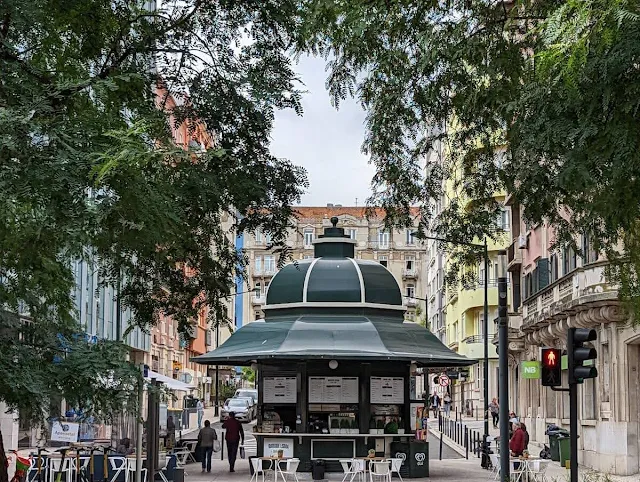


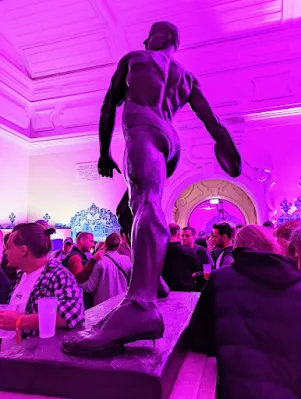

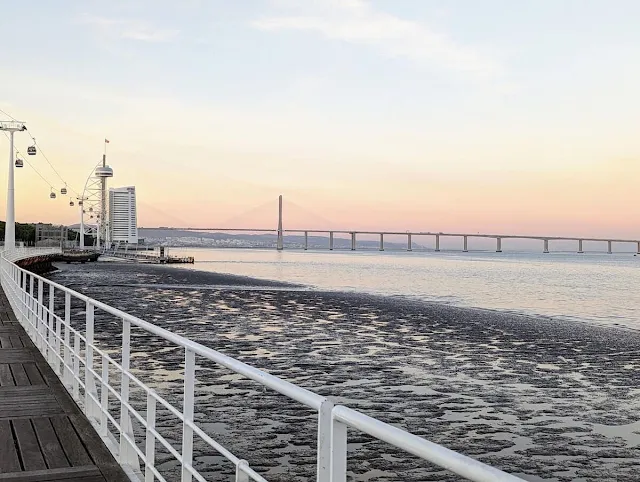



.jpg)
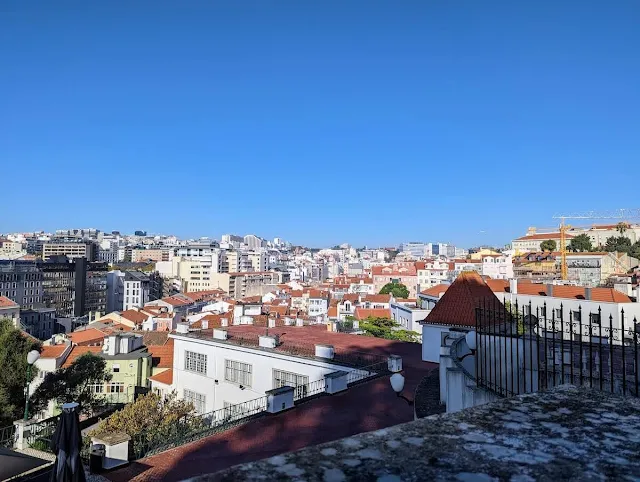




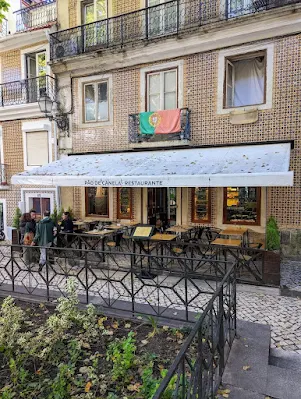

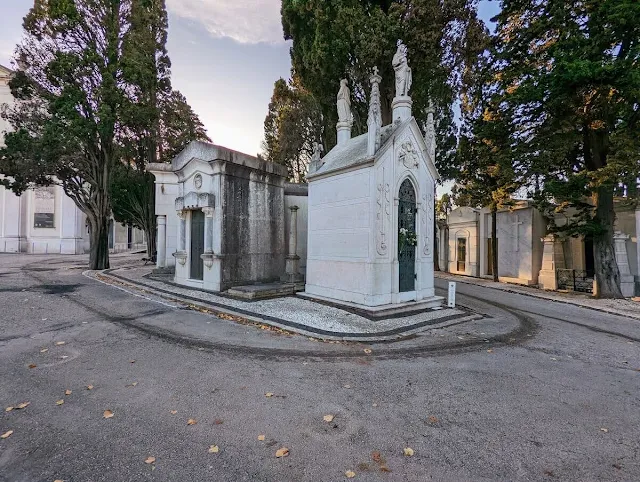

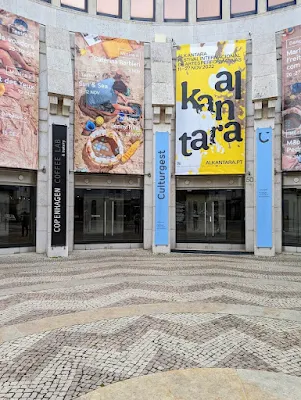


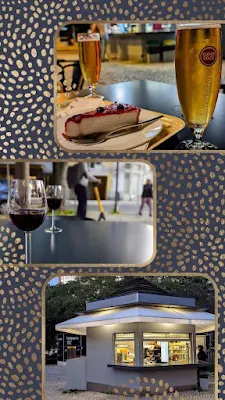
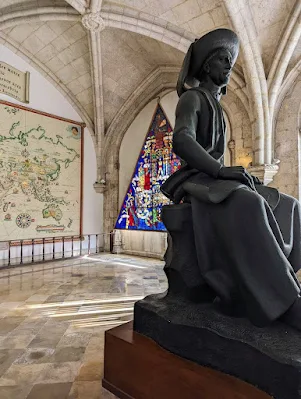

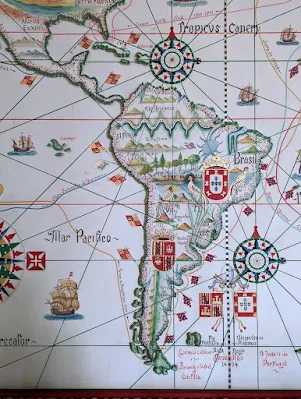

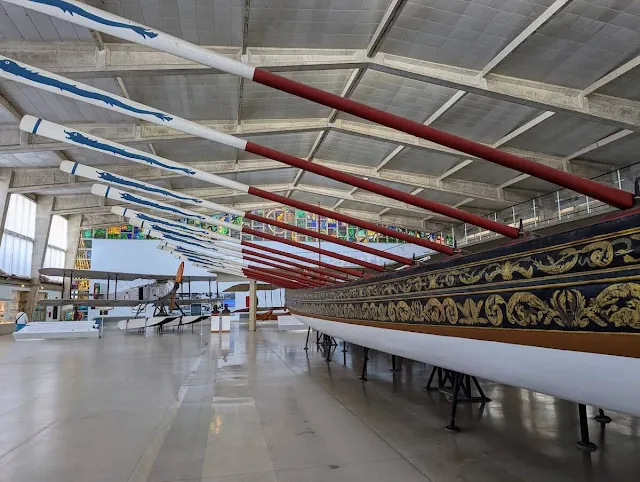

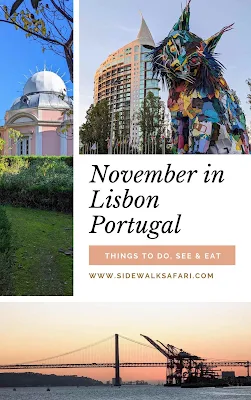
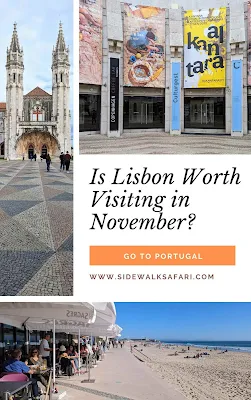
.jpg)
